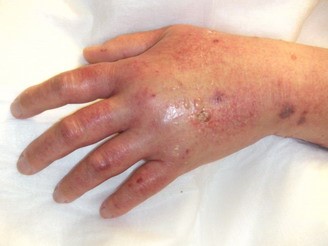
Understanding Infiltration: A Common Complication of Peripheral IV Therapy
Peripheral intravenous (IV) therapy is a vital aspect of patient care in both acute and long-term care settings. However, with its benefits come potential complications—one of the most common being infiltration. As outlined in the Infusion Therapy Standards of Practice, 9th Edition by the Journal of Infusion Nursing, infiltration requires prompt recognition and appropriate intervention to prevent harm.
What Is Infiltration?
Infiltration is defined as the unintentional administration of non-vesicant solutions or medications into surrounding tissue rather than into the intended vascular space. This occurs when the catheter becomes dislodged or punctures through the vein wall, allowing fluid to seep into the interstitial tissue.
Infiltration is distinct from extravasation, which involves the leakage of vesicant solutions that can cause tissue damage. While infiltration typically causes less tissue injury, it can still lead to swelling, pain, compromised perfusion, and even nerve damage if left untreated.
Signs and Symptoms of Infiltration
- Swelling or edema at or near the IV site
- Coolness to touch
- Pallor or blanching of the skin
- Discomfort or pain
- Decreased or absent IV flow rate
Prevention of Infiltration
The Infusion Therapy Standards of Practice provide several evidence-based strategies to reduce the risk of infiltration:
- Routine Site Assessment: Frequent and thorough inspection of the IV insertion site for early signs of infiltration.
- Catheter Stabilization: Securement devices or techniques help minimize movement of the catheter and reduce mechanical phlebitis or migration.
- Site Selection: Choosing an appropriate vein, avoiding areas of flexion, and not using the same site repeatedly in short time intervals.
- Using the Smallest Suitable Catheter: Smaller gauge catheters reduce trauma to the vein wall.
- Patient Education: Instructing patients to report any discomfort, tightness, or changes at the IV site promptly.
Treatment of Infiltration
If infiltration is suspected, the following steps should be taken immediately:
- Stop the infusion and remove the catheter.
- Elevate the affected limb to reduce swelling.
- Apply a warm or cold compress depending on the fluid that infiltrated. (Warm compress for non-caustic fluids; cold compress for solutions that may irritate tissues.)
- Monitor the site closely for changes in skin integrity or delayed complications.
- Document the event thoroughly including the solution infiltrated, symptoms, and patient response.
- Report and reassess to determine whether a new IV site is needed and whether follow-up care is warranted.
In severe cases, a wound care or vascular specialist may be consulted.
Continue Learning: The Basics of Peripheral IV Therapy
Infiltration is just one of several complications that healthcare professionals must be prepared to recognize and manage. Pedagogy Continuing Nurse Education offers an in-depth online course titled The Basics of Peripheral IV Therapy, which explores:
- Anatomy and physiology relevant to IV access
- Vein selection and catheter types
- Complication prevention and management
- Best practices in site preparation and maintenance
This course is ideal for nurses and healthcare providers looking to enhance their understanding of IV therapy, meet continuing education requirements, and improve patient safety outcomes. Learn at your own pace, online, and on your schedule.
References
- Gorski, L.A., Hadaway, L., Hagle, M.E., Broadhurst, D., Clare, S., Kleidon, T., Meyer, B., & Nickel, B. (2021). Infusion Therapy Standards of Practice (9th ed.). Journal of Infusion Nursing, 44(1S), S1–S224. https://doi.org/10.1097/NAN.0000000000000396
- Infusion Nurses Society (INS). (2021). Infusion Therapy Standards of Practice.
- Pedagogy Education. (n.d.). The Basics of Peripheral IV Therapy
